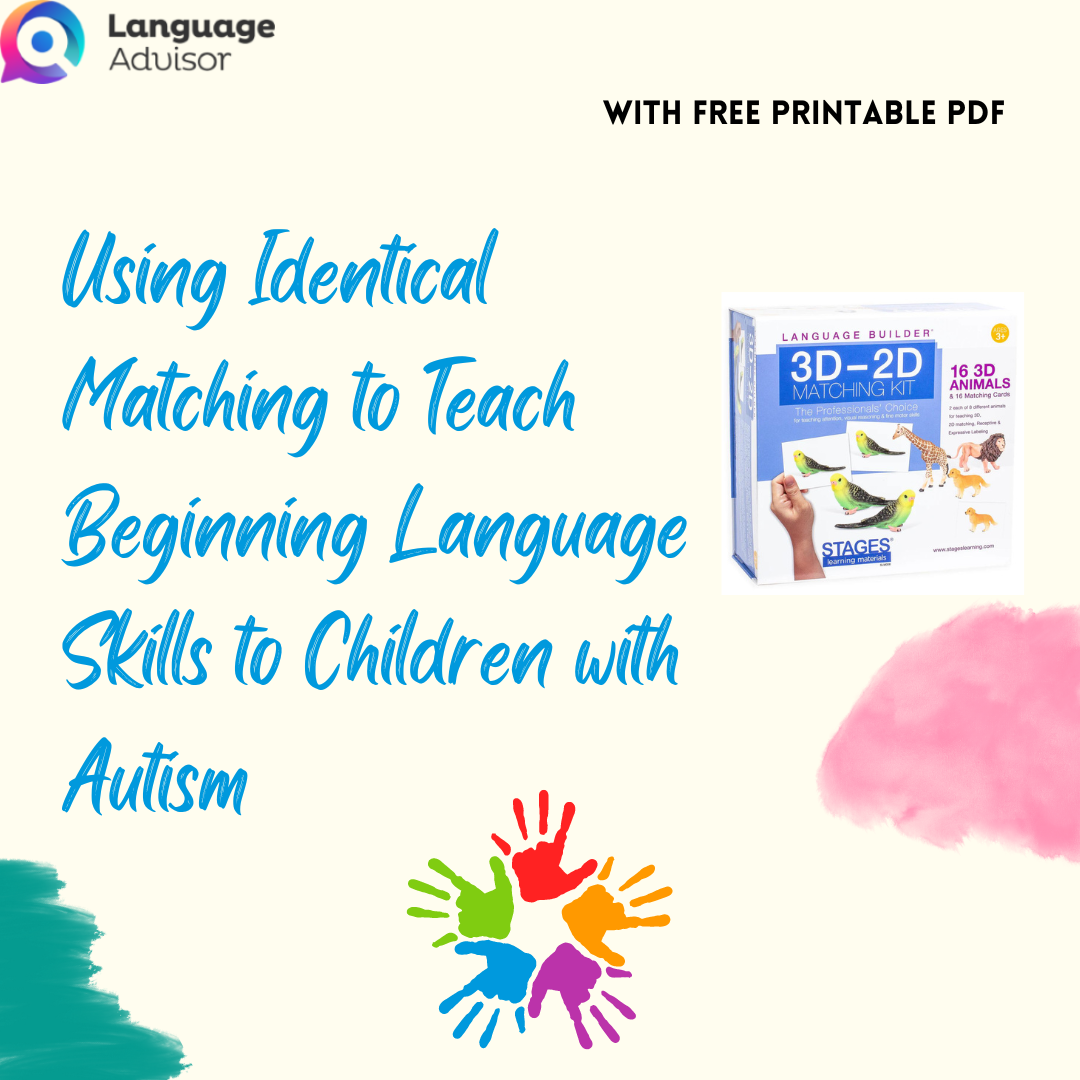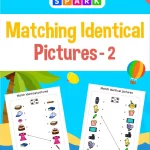Using Identical Matching to Teach Beginning Language Skills to Children with Autism. An Engaging Lesson Plan with Language Builder® Kits
Using Identical Matching to Teach Beginning Language Skills to Children with Autism

Using Identical Matching to Teach Beginning Language Skills to Children with Autism
Matching identical objects is an essential foundational skill for young learners, particularly for students on the autism spectrum. This lesson focuses on using Language Builder® 3D – 2D Matching Kits to help students recognize and match identical items. This hands-on, visual activity promotes early language skills, cognitive development, and social interaction in a supportive learning environment.
Objective:
- Students will learn to match identical objects using Language Builder® 3D – 2D Matching Kits.
Skills Practiced:
- Matching identical objects
- Social skills development
Materials:
- Language Builder® 3D – 2D Animal Matching Kit orLanguage Builder® 3D – 2D Food Matching Kit (available here and here)
Procedures
- Introduce the Concept of Matching:
- Begin by explaining to the student(s) what it means for two things to be the same. You can relate this to everyday activities like putting away dishes or folding socks, where matching is an essential skill.
- Initial Matching Activity:
- Take out 2-4 pairs of matching cards from the kit. Ask the student to match the cards that look the same. If this is difficult, reduce the number of pairs or place the matching cards closer together.
- Memory Game:
- Mix 2-4 pairs of cards and turn them face down. Arrange them in a grid and model turning over two cards at a time to find a matching pair. The child keeps any correct matching pairs.
- Increase Difficulty:
- Gradually increase the number of cards in the grid as the student becomes more confident in finding matches.
- Introduce 3D Matching:
- Once the student has mastered matching identical cards, introduce 3D manipulatives. Start with two identical manipulatives and gradually add more, encouraging the child to match one 3D object to another, even when there are distractions.
Variations:
Line Arrangement:
Instead of using a grid, arrange the cards in a straight line to make the matching game simpler for beginners.
Memory Challenge:
Begin with the cards face up. Give the student 10 seconds to memorize their locations before flipping them over. Then, ask them to recall and match the pairs from memory.
People:
This lesson can be conducted with one child or in a small group, making it suitable for classroom or therapy settings.
Wrap-Up:
Encourage the student(s) to talk about how they found the matches and celebrate each success. As students become more proficient at matching identical objects, these skills will support other cognitive and language-based learning tasks.
By using these Language Builder® 3D – 2D Matching Kits, you’re not only reinforcing key learning concepts but also making the process fun and interactive.
Download our free printable PDF to enhance this lesson and provide additional practice at home or in the classroom!

DOWNLOAD THE PDF FOR FREE






